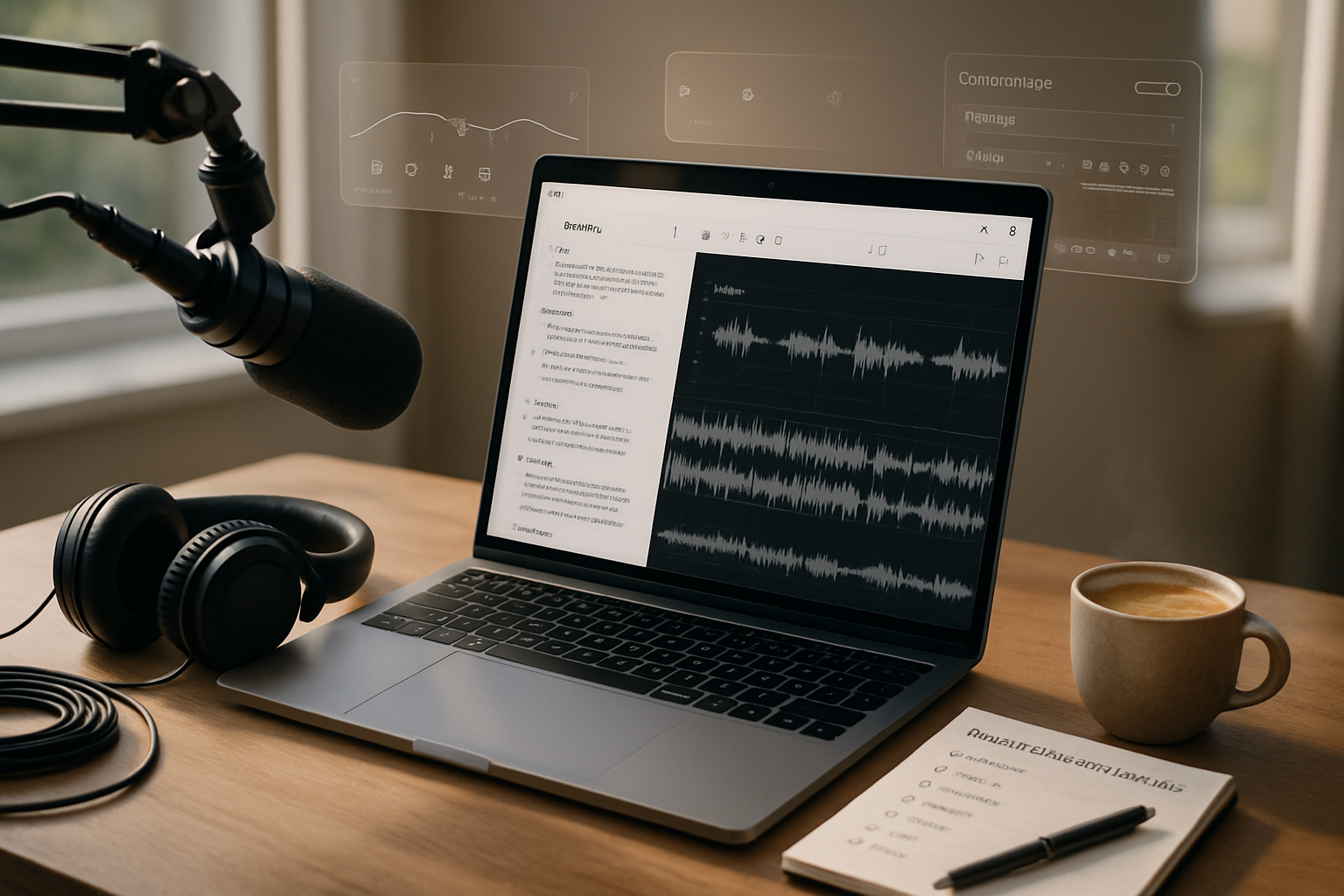· creativity · 5 min read
Maximizing Emotional Impact: How to Use Sonantic for Heartfelt Voiceovers
Learn practical techniques and expert-backed workflows to get emotionally resonant voiceovers with Sonantic's AI - from scriptwriting and parameter tuning to mixing and ethical best practices.

Why emotional voice matters
Human listeners respond to nuance. A slight hesitation, a breath, or a vocal crack can change a line from informative to unforgettable. Sonantic built its reputation on generating speech that captures subtle human affect, making it a powerful tool for games, film, advertising, and any narrative-driven experience. For more on Sonantic and their technology, see their site: https://www.sonantic.io/.
This article walks through concrete techniques and workflows to maximize emotional impact with Sonantic’s AI voice capabilities, backed by industry best practices and research on speech synthesis.
How Sonantic makes emotion possible (brief)
Sonantic focuses on modeling micro-expressive elements of human speech - timing, micro-pauses, breath, pitch inflections - to produce convincing emotional delivery. If you want background on the commercial and technical trajectory, see coverage of Sonantic’s acquisition and product direction here: https://techcrunch.com/2022/03/16/spotify-acquires-sonantic/.
Understanding what the engine can control (prosody, timing, breath, emphasis) helps you design a production workflow that extracts the most emotional nuance.
Pre-production: write for emotion
- Start with intention - for every line, write a one-sentence emotional intent (e.g., “reassuring, weary, quietly hopeful”). Keep that intent visible to whoever tunes the voice.
- Shorter, purposeful sentences allow clearer emotional shaping. Long compound sentences can flatten intensity in synthetic voices.
- Use stage directions sparingly and clearly. Instead of vague notes like “angry”, specify the behavior - “tight jaw, quick phrases, rising pitch on anger rises at the end of clauses.” This makes it easier to map to parameters.
- Mark up breaths and pauses in the script. Example - “I… really didn’t expect that. [short breath] But it’s okay.” These cues translate to pause tokens or SSML annotations.
Choose the right voice profile
- Pick a voice whose natural timbre fits the role. A voice that already leans warm and intimate will need less manipulation than one that is bright and distant.
- Consider age, gender, and cultural fit. Emotional cues are perceived differently across demographics; align voice choice with your audience’s expectations.
Directing emotion through parameters and prosody
Most advanced TTS systems (including Sonantic) expose controls for:
- Pitch
- Rate (speed)
- Volume
- Breathiness and vocal effort
- Pause length and placement
Use these levers intentionally:
- Sadness - lower pitch, slower rate, slightly breathy texture, longer pauses.
- Anger - higher mean pitch (or more variance), faster rate, sharper consonant attacks, reduced breathiness.
- Fear/suspense - variable pitch, shorter phrases, more clipped breaths, pauses at clause ends.
Example SSML snippet (generic) to illustrate prosody and pause control:
<speak>
<p>
<prosody rate="95%" pitch="-2%">I didn't expect this.</prosody>
<break time="400ms"/>
<prosody rate="90%" pitch="-5%">But we'll get through it.</prosody>
</p>
</speak>Note: Sonantic may offer proprietary controls beyond SSML. Use SSML as a baseline and consult Sonantic’s docs for platform-specific tags.
Micro-edits that change everything
- Emphasize phonemes - intentionally alter spellings or insert hyphens to stretch a vowel for emotional effect (e.g., “Nooooo” vs “No”).
- Insert controlled breaths - a small inhalation before a sentence can make the delivery feel lived-in.
- Use micro-pauses - 150–450 ms breaks at clause boundaries produce a conversational, human cadence.
- Add intentional mispronunciations or slurred syllables sparingly to convey weakness, intoxication, or deep fatigue.
Performance layering and hybrid approaches
Most pros use a hybrid approach: combine a Sonantic render with human recordings or foley to add realism.
- Layer human breaths and mouth sounds over the AI voice to fix subtle artifacts and boost naturalness.
- Record a human actor reading the same lines for a reference track. Use it to drive parameter choices and micro-timing adjustments.
- In emotionally extreme scenes, consider blending a human take (for the most intense lines) and Sonantic for variations or localized quick-turn lines.
Mixing and post-production tips
- EQ - gently reduce frequencies between 200–400 Hz if the AI voice sounds muddy; boost presence around 3–6 kHz for intelligibility.
- Compression - use light compression to keep dynamics, then a second gentle limiter to control peaks without squeezing emotion out.
- Reverb - avoid heavy wash in intimate moments - a touch of short, warm reverb can situate the voice in a realistic space without flattening expression.
- Automation - automate volume and subtle pitch shifts to accentuate key emotional words.
Testing: iterate with real listeners
- A/B test different parameter sets with representative listeners and measure emotional response qualitatively (surveys) and quantitatively (engagement metrics, completion rates).
- Use blind tests - play human reads vs Sonantic renders and ask listeners to label emotion, intensity, and authenticity.
- Track micro-metrics - drop-off at emotional beats, user-reported immersion, and recall for narrative lines.
Accessibility and localization
- Emotional TTS can improve accessibility when used carefully. For audio descriptions or assistive narration, match emotional tone to context but avoid overdramatization that might confuse meaning.
- For localization, don’t just translate words - map emotional intent into culturally appropriate vocal behaviors. Pitch and pacing expectations vary by language and culture.
Ethical and legal considerations
- Always obtain consent for voice likenesses. Synthetic voices can be convincingly personal; respect rights and attribution.
- Be transparent when synthetic voices are used in contexts where authenticity matters (e.g., journalistic content, political messaging).
- Consider deepfake risks and build safeguards into distribution and usage policies.
Tips from industry practitioners (aggregated)
- Voice directors - “Start with the smallest change - a 5–10% adjustment in rate or pitch often yields more natural results than extreme settings.” (common industry practice)
- Sound designers - “Layer live breaths and mouth noise at low levels. They fool the ear fast.” (community best practice)
- Game writers - “Write emotional intent into the script and map it to discrete parameter presets - makes iteration across thousands of lines feasible.” (applied workflow used in interactive narrative)
For additional reading on voice synthesis standards and markup, see the W3C SSML spec: https://www.w3.org/TR/speech-synthesis/.
Quick workflow checklist
- Define emotional intent per line.
- Select voice profile that matches intent.
- Create parameter presets for common emotions.
- Render initial takes and compare against human references.
- Micro-edit phonemes, insert breaths, and tune pauses.
- Layer human elements (breaths, subtle mouth sounds) where needed.
- Mix with gentle EQ, compression, and context-appropriate reverb.
- Run user tests and iterate.
Final thoughts
Emotional impact with AI voice is a combination of careful scripting, precise parameter control, surgical micro-edits, and thoughtful post-production. Sonantic’s tools give you expressive controls - but the human sensibility of a director, writer, and sound designer is what turns technical capability into true emotional resonance.
Experiment with small changes, test with real audiences, and treat the AI voice as an instrument to be played, not a black box to be accepted as-is.
References:
- Sonantic - official site: https://www.sonantic.io/
- TechCrunch on Sonantic acquisition: https://techcrunch.com/2022/03/16/spotify-acquires-sonantic/
- W3C Speech Synthesis Markup Language: https://www.w3.org/TR/speech-synthesis/



